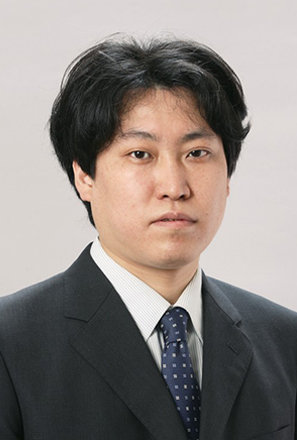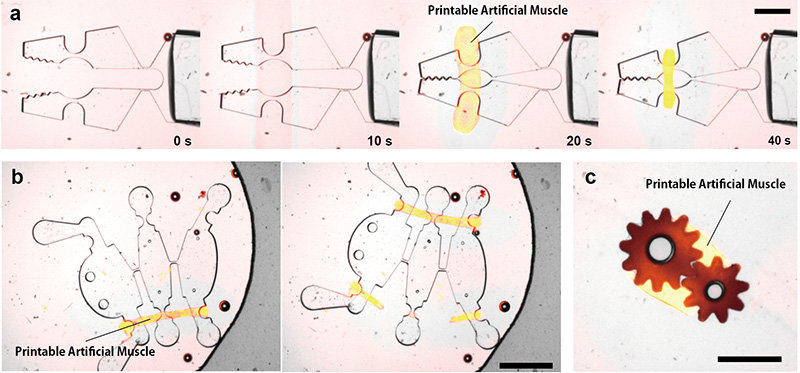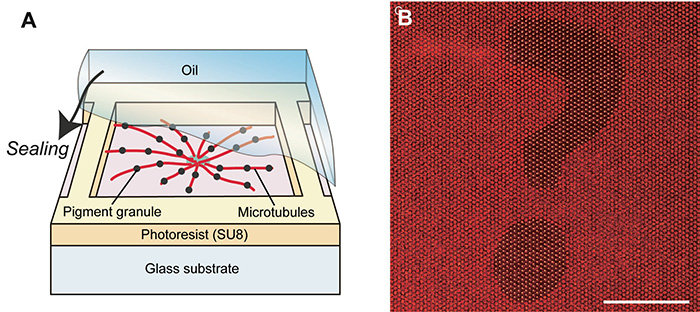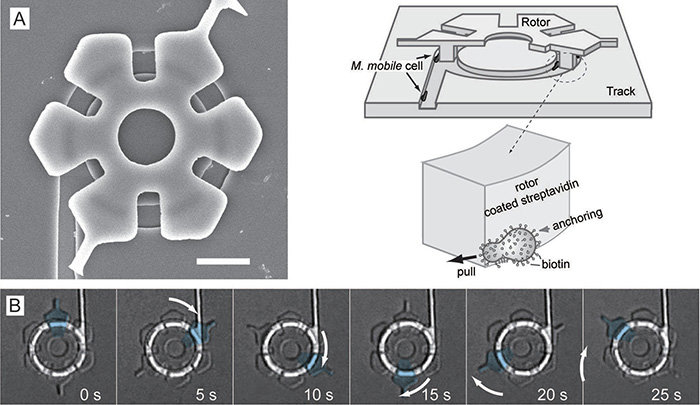
Micro-Mechanical Devices Powered by Motor Proteins
Laboratory on Bio-Molecular Mechanical Engineering
Associate Professor:HIRATSUKA Yuichi
E-mail:
[Research areas]
Protein engineering, Mechanical engineering, Nano-biotechnology, Biophysics
[Keywords]
Molecular robotics, bioMEMS, Molecular motors, Genetical engineering
Skills and Background we are looking for in Prospective Students
Basic knowledge of biochemistry, biology and protein science or mechanical engineering, and broad intellectual curiosity.
What you can expect to learn in this laboratory
* Protein engineering and skill of genetic engineering
* Micro-fabrication (photo-lithography, soft-lithography, etc.)
* Protein preparation and biochemical analysis
* Operation of optical microscopes
* Development of simple software for microscope and other devices
【Job Category of Graduates】 Manufacturer in chemical, mechanical or IT company, etc.
Research Outline



Living organisms have developed diverse functions through evolution over a long period of time. Some functions are related to mobility, including muscle contraction, bacteria' s swimming and cell division. Nanometer proteins called motor proteins are integrated into motion assemblies with dimensions ranging from the micrometer-scale (bacteria) to the meter-scale (muscle). A motor protein is a molecular machine that converts chemical energy into dynamic force with great efficiency. This is an excellent property that conventional artificial motors do not have. In our laboratory, we are developing biohybrid micro-mechanical devices integrating protein engineering and micro-fabrication technology.
1) Printable artificial muscle built from motor proteins
We are developing printable artificial muscle which can be induced the hierarchical self-assembly of motor proteins into an artificial muscle by spatially selected illumination, that can be integrated into engineered systems. The artificial muscle opens the possibility of 3D printing of micro/soft robot built from protein molecules.
2) Optical device driven by motor proteins
We developed an optical device driven by motor protein, which mimicking a molecular system of fish pigment cell, melanophore.
3) Micro-rotary motor powered by bacteria or motor proteins
We also developed micro-rotary motor driven by living bacterial or motor proteins. This ATP or glucose-driven rotary motor has a unique feature compared with conventional electronical motors.
Key Publications
- Takahiro Nitta, Yingzhe Wang, Zhao Du, Keisuke Morishima & Yuichi Hiratsuka A printable active network actuator built from an engineered biomolecular motor Nature Materials 20, 1149–1155 (2021)
- Susumu Aoyama, Masahiko Shimoike, and Yuichi Hiratsuka Self-organized optical device driven by motor proteins Proc. Nati. Acad. Sci. (PNAS) 110, 16408-16413 (2013).
- Y. Hiratsuaka, M. Miyata, T. Tada and T. Q.P. Uyeda, Micro-rotary motor powered by bacteria, Proc. Nati. Acad. Sci. (PNAS) 103, 13618-13623 (2006).
使用装置
Photo-lithography and microfabrication devices,Leaser lithography equipment
Protein purification and analysis devices
Fluorescence microscope
Fermentor, etc.
Teaching policy
We are challenging to develop a novel bio-hybrid micro-mechanical device integrating protein engineering and micro mechanical engineering. To achieve this, we encourage students to get a broad knowledge and flexible ideas and enjoy the research.
[Website] URL:https://www.jaist.ac.jp/ms/labs/hiratsuka/